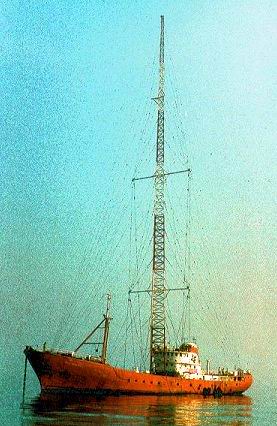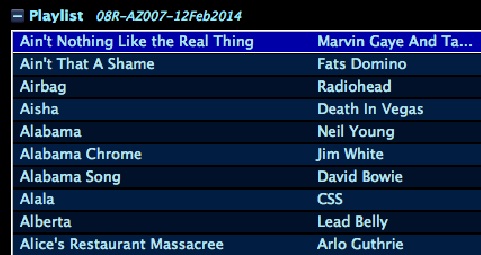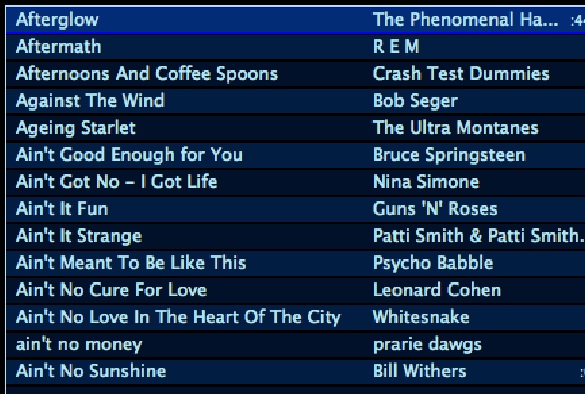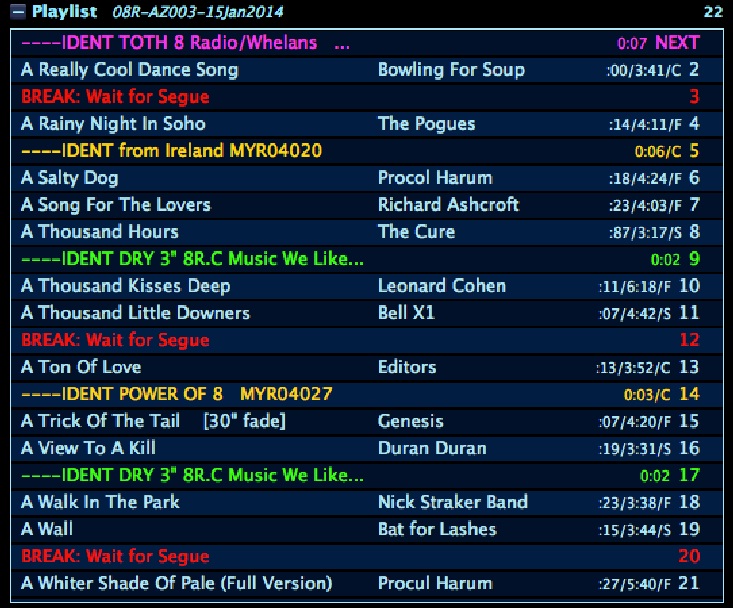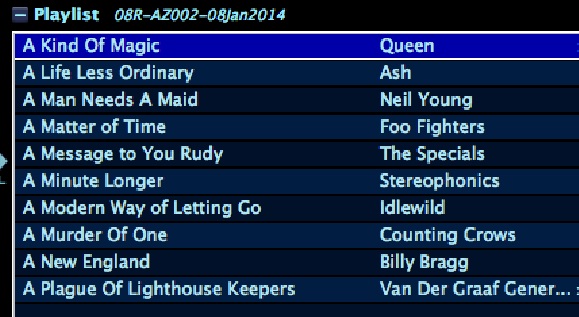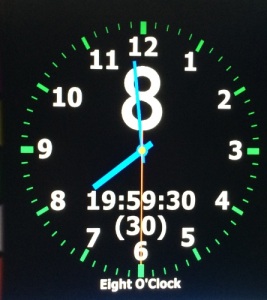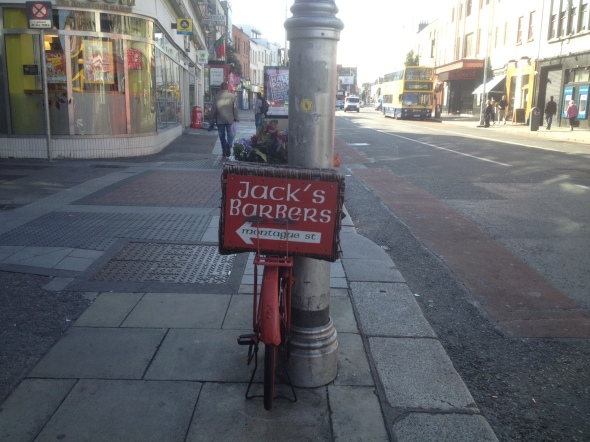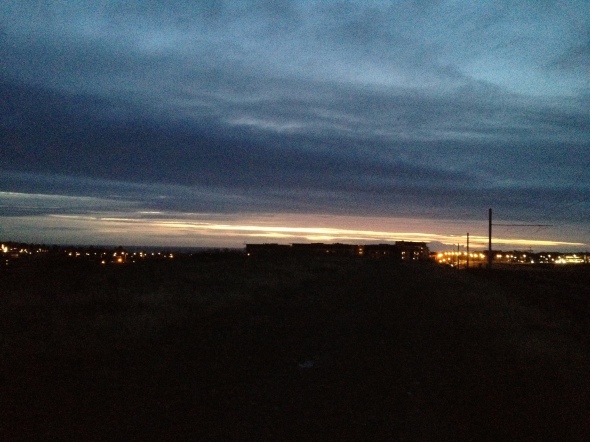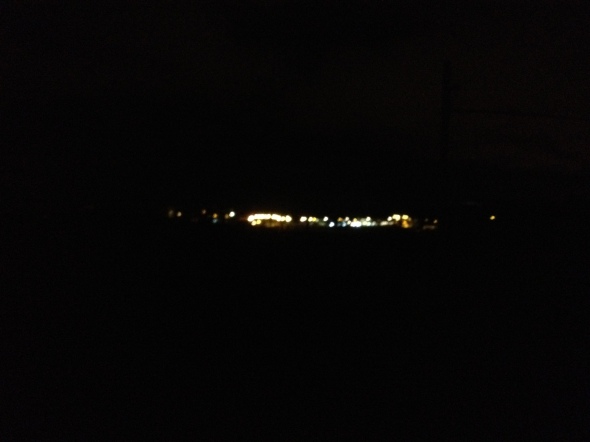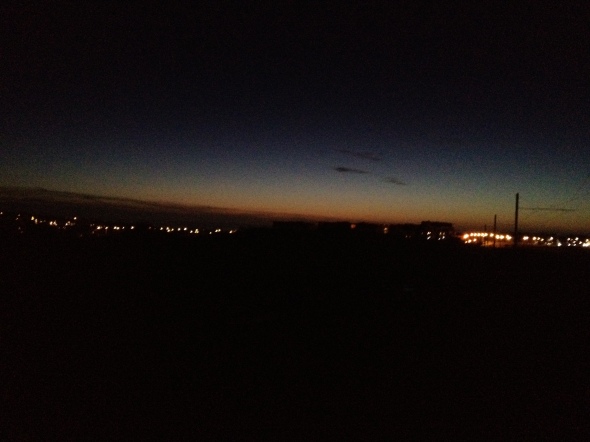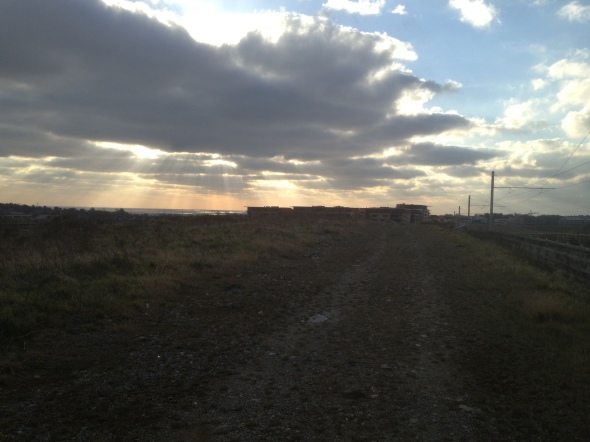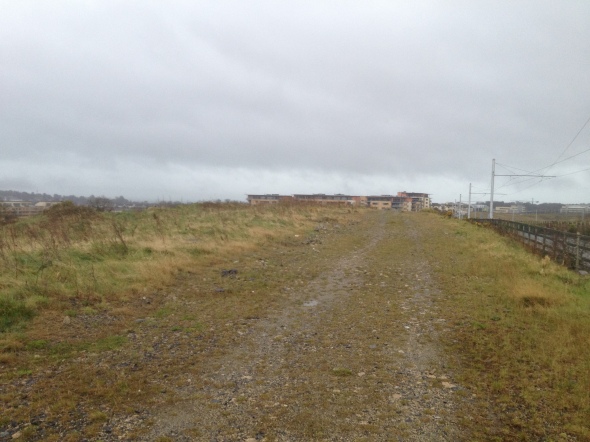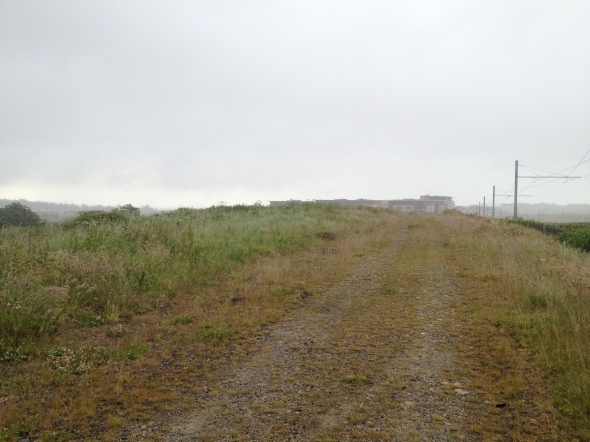It’s been too long
Posted: February 8, 2024 Filed under: Uncategorized 1 CommentBless me father, for I have sinned. It’s more than two years since my last confession here.
I’m still around, still doing radio (8Radio.com 8pm Wednesday evenings, repeated 10am Saturday mornings) and still loving life.
That pesky second book is on ice at the moment, as in my real world (ie non radio career) I am currently contracted on a project which precludes any outside commercial activities (8 Radio being specific exception).
But I shall start writing and sharing content here more regularly.
Steve
8th February 2024
If A Band Falls In The Forest . . Are They Worth It? [Extract from new book] [06July2019]
Posted: July 6, 2019 Filed under: Early Phantom, Irish writing, Music, New Music, New writing, radio, Radio presenting | Tags: Dublin, Music, Music Radio, Phantom, Pirate Radio, radio 1 CommentBelow is an extract of part of a chapter of my next book “Outside In – Everything I Know About Radio I Learned By Screwing It Up”
This chapter relates to 2001/2002, when I did the breakfast show on the original, pirate-era, Phantom FM.
I’m posting it today because I happen to be playing the band in question, this morning, as part of episode 290 of An A-Z of Great Tracks on 8radio.com
This particular track, and this particular chapter, sum up so much of what I feel about music and radio, I just wanted to take the opportunity to share this chapter when the track came up in the A-Z.
Steve
24 – If A Band Falls In A Forest, Are They Worth It?
Flashback to 2001.
It is just after sunset on a weekday evening sometime in late summer. I am in the front room of a suburban house somewhere just off the Rock Road in Dublin, within a stones throw of the sea. I can’t remember exactly where, now, but I do remember the excitement of all involved, especially myself.
I was in a house I’d never been to before, facing four lads I didn’t know, who were about to give me a wonderful gift – their dreams, inspiration and perspiration, all wrapped up in that little package of hope that is called a demo CD. They gave it to me, freshly burned and unlabelled, and I was out the door promising them that yes, I would listen to it, and yes, I would give it a spin on the breakfast show on Phantom .
Phantom’s music controllers, John Caddell (International) and Paul Clarke (Irish) were always on the lookout for good new material, and Paul hosted a Wednesday night show devoted entirely to new Irish music, and was legendary on the scene for the unstinting support he gave to new bands.
Once I had settled into the breakfast show, I started to develop something of a reputation myself, not on the scale of Paul in terms of his quantity and quality, but as a breakfast DJ with willingness to put new material straight on the air, without letting my own opinions moderate, and without any vetting process other than making sure that the contents were not obscene. I really believed in what Phantom was doing, and was always willing to give a new band a play, and indeed later developed a feature or “hook” on my show whereby I would ask people to send me in their demos, and I would open the package, and put it straight on, live on air, giving a running commentary of what it looked like and anything else in the envelope. The music wasn’t always outstanding, but it sometimes showed promise, and best of all it made for wonderful live radio.
There were unintended comic interludes too, like the time that a then unknown band called Ham Sandwich left me a CD, and to pique my interest, they included a real ham sandwich in the package. Sadly I was away for a few days when it arrived, so when I did open the package on air, it was to a quite noxious smell . . .
Better still was my dumbfounded silence and quick switch to music one morning when the package I opened during a live link, expecting a musical treat, turned out not to be, as I had expected, a demo from some new band, but some photos and a rather explicit mail from Karen (see previous chapter).
But to go back to the lads in the house somewhere off the Rock Road, I did indeed play their music, and liked it so much that I still have the CD nearly twenty years later. There were two epic long tracks and one very passable 4 minute single-candidate on their demo, with a depth of lyrics that matched the passion I had seen on their faces during our brief encounter.
Nothing ever came of this band, indeed I never heard of them again, and as far as I can make out, they must have split up and gone their different ways many years ago without even the faintest glimmer of the success that I felt they deserved. I can find no trace of them now, and an internet search only reveals a new, and seemingly unrelated Dublin poprock band who have taken the same name – “Milk“.
Now, by any definition of those involved in mainstream radio, my demo tracks from the original 2001-era Milk band are unknown, unplayable, in effect worthless. But I ask myself – why?
Does it matter that these people had no rise to fame, no chart success, no record deal? If I like what I hear when I play the CD, does it matter that no one knows them? If a piece of music deserves to be heard for the passion put into it, why should it be discounted just because it is unknown?
For me, music, once committed from the soul of its creator to the medium of storage, is a valid choice forever, even if it is the tree falling in the forest that nobody is there to hear.
So many trees fall in the vast forest that is the music industry, and so few people are willing to venture far enough in from the edge of the forest to hear them . .
I Live In A Media Bubble . . Literally [26June2017]
Posted: June 26, 2017 Filed under: Uncategorized Leave a commentThe term “media bubble” has gained much currency over the last 12 months, and can describe either the set of supporting opinions and narratives you can wrap yourself in, particularly on social media, to blind you to the prevalence of other opinions, or sometimes the bubble that much of the media themselves live in, cushioned by a reinforcing set of beliefs by similar Islington/Guardian/BBC/Salford/NYT or whatever circles. It is particularly easy to sucked in to these bubbles of unreality if you choose to stay on the main roads digitally, and never explore off the beaten path in search of interesting views and conflicting opinions.
I like to think of myself as intelligent and grounded enough to see through and step beyond the bubbles (though that might be part of my own particular delusion).
But I cannot deny that I am living inside a media bubble of a different, more tangible kind, one enforced by geophysical realities.

This is the view from the top of the hill above my house, looking towards another hill, close by. I live down in the narrow valley hidden between these two hills, and there is a further hill out of sight to the left.
The exact location is unimportant (I value my privacy) but for our purposes you need to know that this is in the Midlands of the Republic of Ireland, just about within commuting distance to Dublin (if you are prepared to accept a two hour commute) and not beside either the east coast, or the border with Northern Ireland.
Thanks to the local geography, I effectively have tens of thousands of tons of solid rock and earth on three sides of me, and a clear path leading North West. This has the effect of blocking every Dublin based FM transmitter, and most from other areas, and clearing the band to give a free run for everything from Northern Ireland. As I drive around this big hill on the first 5 or 6km of my morning commute, I can choose from BBC Radios 1, 2 and 4, BBC Ulster, and Downtown Radio (Belfast) all crystal clear on FM. Of the Dublin stations there is nothing for the first few km, until they eventually come back in again, in some cases on top of the NI transmitters. (We can however receive RTE Radio 1, and Newstalk, which are national, and have transmitters elsewhere than in Dublin)
The same geography enforces internet isolation. There is no wired broadband in this valley, nor ever any prospect of such. The mobile signals are too weak – nothing from 3, and just a -120db signal from Vodafone on 3G only (not 4G) . You can use a Vodafone broadband device, but the speed is less than a tenth of a meg.
So we have satellite broadband from Europasat, which works exceptionally well, and gives us speeds of around 26Mb. (That’s nothing special for you city dwellers but a huge step up from 0.1 Mb I can tell you!) One of the delightful things about this is how it seems to confuse some of the geo-sensors on the web – if not logged in to YouTube, the adverts will always be in Italian for example (another bubble).
I leave home early in the mornings – 0520 four days a week – and my routine in the car now involves a 10 minute circumnavigation of the UK via the Shipping Forecast on Radio 4.
If the signal lasts long enough, I’ll catch the 0530 news briefing too, then it is over to podcasts.

The fifth day a week, usually Mondays, I’m off to work even earlier (see above!) and then it is a toss up between the World Service on FM, or BBC Radio 1, where this morning Jordan North was playing some fine tunes (standing in for Adele). After all my years spent living in the UK, and now 17 years back here in Ireland, it is strange to have this juxtaposition of the two as I have my choice of British stations on FM as I wind my way along very rural Irish back roads in the early dawn.
There is, of course, one other issue brought up by my situation.
Go look again at the photo from the top of the hill, and the landscape around.
I have said I live in the Midlands of Ireland, which I do, Everyone knows the midlands are flat, and I live in a county which is known to be flat, fertile farmland, with few distinguishing features.
Known, that is, to everyone who only ever passes through on the motorway and main roads, and who never take a turn off to explore the side roads, and see what different views they might encounter. It’s like a physical version of the internet :-).
Steve
You Decide. [25May2017]
Posted: May 25, 2017 Filed under: Uncategorized Leave a comment
(Location: Woolwich Free Ferry, London. Picture by Steve Conway)
My Facebook Manifesto. [06May2017]
Posted: May 6, 2017 Filed under: Uncategorized Leave a commentThese days I use Facebook far, far less often than I used to.
This is due to the actions, in aggregate, of the majority of other parties on there, whose policies concerning Facebook use and abuse I disagree with, and believe to be counter of the broad public interest.
It’s time to take a personal stand, and launch my own manifesto.
If elected to be your “friend” on Facebook, I promise that a Steve Conway government will adhere to the following:
ONE: I will never enroll you in groups without having sought your explicit permission beforehand. This applies to all catorories of groups – including the below, listed along with the frequency with which they are usually encountered:
- annoying groups, (10%)
- offensive / racist / hate groups (5%)
- Groups just set up to self-promote (12%)
- Groups Which Have No Relevence Whatsoever to the Unwilling Enrolee (72%)
- Groups you actually might be interested in (1%)
TWO: I will not send you Calendar invitations to “events” unless they are actual physical events to which you as a physical human being are invited. I will also not send calendar invites for events which are on the other side of the world, and which you have no realistic prospect of attending, unless you are my sister/cousin/best friend and I am willing to coordinate the event with your travel plans.
THREE: I will never tag you in posts which do not actually directly involve you, and even for those my use of tagging will be moderate.
FOUR I will never, under any circumstances, try to guilt-trip you into sharing/re-posting anything I post by implying that 93% of people won’t repost the content, but that genuine people who care about abused kittens / tragic world events / purple toasters will.
FIVE: Under most circumstances, and unless directly attributed, my thoughts will be my own.
SIX: I will not hijack your popular post to add comments promoting my own commercial interests. (Such as, for example, join in a “Happy Birthday xxx thread to plonk an advert for diet pills into the comments).
SEVEN: I will not tell you that Facebook is about to start charging subscription from next Tuesday, that Buddy Holly has just died, or that next month is the only one in 888 years to have five Mondays, Tuesdays and Wednesdays, firstly because I fact check against reputable news organisations anything dramatically newsworthy, but mainly because I am not an idiot.
EIGHT: Notwithstanding all of the above, I do acknowledge that I will probably make an idiot of myself at some point, but I will try very hard not to make an idiot of you, or a nuisance of myself.

Author’s Note: This is an original list written ad-hoc by myself Steve Conway on Saturday 6th May 2017, at Starbucks, Nutgrove Shopping Centre, Dublin, Ireland.
Should, by any remote chance, this list strike a chord, it will doubtless be re-posted by lots of people all claiming to have written it for themselves. As Fleetwood Mac put it so eloquently in the 1960s: “Oh Well”.
Steve Conway
Pushing The Boundaries – The 1987 election and the great (off) land-grab
Posted: May 4, 2017 Filed under: Uncategorized 1 CommentThe current (2017) UK General Election campaign is very much of it’s time – Brexit, Corbin, May, but is also reminiscent in some ways of one 30 years ago, which I always consider as *MY* election, given that I covered it hour by hour in my role as Head of News on Radio Caroline, then broadcasting to an audience of around 3.5 million people from a long established anchorage in International Waters, just outside the 12 mile territorial limit off the Essex coast.

(Picture: view from Radio Caroline ship Ross Revenge at the Knock Deep anchorage, picture by author)
Like this years election, it was called early by a female Tory Prime Minister seeking a third term for the Conservatives and banking on doing well against a Labour leader strong on conviction, popular with the grass roots but possibly less so with the voters.
As with this years election, parliament was dissolved in May for an election date in early June (June 8th this time round, June 11th in 1987). As is normal in such circumstances, a number of susbstantial and some minor pieces of legislation were rushed through parliament on both occasions, to allow them to come into law before the election, as otherwise they would have to start from scratch again following the election. This “wash-up” is done with agreement between government and opposition, and means that fairly complex pieces of legislation can come into effect with far less debate and scrutiny than usual.
As I was listening to the final pre-election “Today in Parliament” podcast from the BBC the other night, and hearing the reading of royal assent for a whole batch of bills – Digital Ecomomy Bill, Bus Services Bill, Higher Education bill etc – it reminded me on a piece of legislation which slipped through almost unnoticed in the 1987 washup, greatly expanding the size of the United Kingdom and profoundly impacting one small group of people – the little community of broadcasters on board the Radio Caroline ship.
The Territorial Sea Act of 1987 changed the way that the “12 Mile Limit” was calculated, taking any sandbank or rock within the limit and uncovered at low tide as dry land, and thus the base for a further 12 miles extension. So a sandbank 11 miles from the coast uncovered at Spring Tide could have the effect of converting the 12 miles limit into 23 miles, and if within that extended limit there was another sandbank . . further still. The way that the coast was calculated on bays and large estuaries was also simplified with similar effect.
The end result was a land-grab ~(or “sea-grab) bringing thousands of square miles of formerly international waters under British jurisdiction – including the patch of sea where Radio Caroline was located, the “Knock Deep” also known as “Pirate Alley” as protected from the worst seas by nearby sandbanks it had been a favoured location for pirate ships over the years, with at least three (Mi Amigo, Ross Revenge and Communicator) having used it at different times.
The new act extended the limit to cover this area, and due to the sandbanks occasionally surfacing at the lowest of tides, for a further 12 miles beyond it. Radio Caroline would have to move to more open waters, further out to sea, and with less shelter.
After much discussion, a new anchorage was eventually decided on, this time off the Kent coast, and approx 18 miles from the nearest point of land (North Foreland), and a mile and a half from the new territorial limit at this point of the coastline.
But 1987 was very unlike 2017 in terms of technology and information flow. There was no internet, no ability to search Hansard (the record of UK parliament) and as the bill was not particularly newsworthy in more general terms, no reporting of when its provisions might come into law. As parliament dissolved with the Territorial Sea Act now passed into law, we had no idea when it would be enacted, and had to arrange for a tug from The Netherlands to come as soon as possible to assist us in raising anchor and moving to our new location (Caroline’s 1000 foot extra strong anchor chain being too heavy for the ship to lift under its own power).
Not knowing the enactment date, and whether we might already be within the UK jurisdiction, we had a nail-biting wait as day after day passed with no word from land as to when we would be moved. We figured we would be safe until after the Election Day in any case, and were mightily relieved when the tug showed up on June 10th, one day before.
The Territorial Sea Bill, passed in a hurry before the 1987 election pushed Caroline out into deeper, rougher waters, and ultimately a date with the Goodwin Sands some years later. This was surely a beneficial byproduct of the legislation, if not one of the prime drivers of it.
It’s remarkable though, that a bill so greatly extending the physical size of the United Kingdom could pass so unremarked by media in the run up to a General Election.
It makes you wonder what slipped through this time round doesn’t it?
Steve
Shiprocked – New Edition launched in Dublin
Posted: January 16, 2015 Filed under: 1980s, 1987, Irish writing, New writing, Newsreading, non-Fiction, offshore, Radio Caroline, Radio presenting, Ross Revenge, Shiprocked!, storms at sea | Tags: books, Irish writing, radio, Radio Caroline, Shiprocked! 1 CommentThe new (2014) edition of Shiprocked – Life On The Waves With Radio Caroline was launched in Dublin last night, with former Caroline and RTE 2FM broadcaster, and current-day drive time 4FM presenter Gareth O’Callaghan doing the honours.
The book is already in stock at most large retailers in Ireland, and will be on sale in the UK shortly.
Below are some pictures from the launch event, in which selected extracts from the text were presented alongside archive TV news footage and of-air audio to give a flavour of 1980s Caroline for the 100 strong crowd who turned out at The Odessa Club for the occasion.
Big thanks to Johnny Bambury for this excellent series of shots.
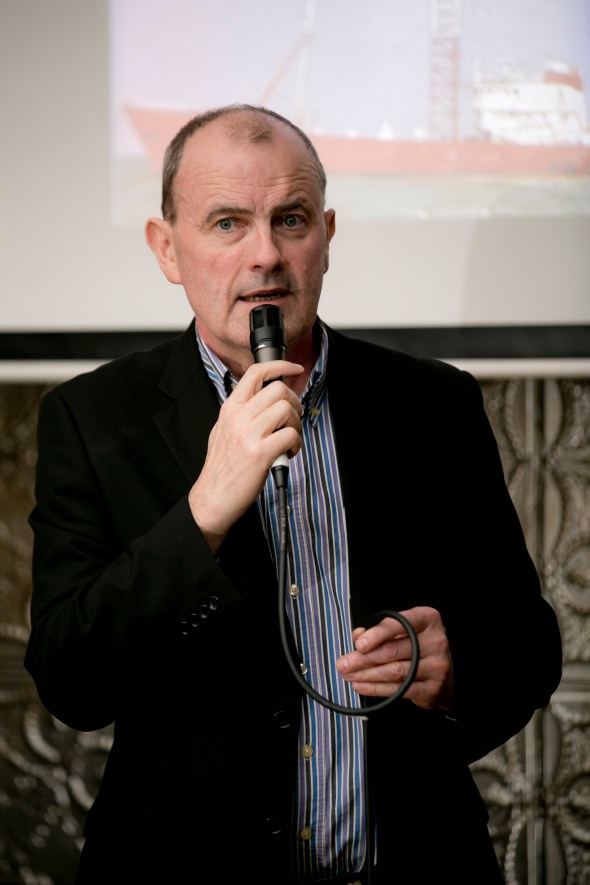
Gareth told the audience how much he enjoyed reading Shiprocked (twice!) and also spoke of his own fond memories of working on board Radio Caroline

A number of former Caroline staffers were present for the launch, including Caroline North engineer Michael and his daughter Sue (Michael centre in shot) and former Caroline newsreader turned music journalist Stuart Clarke (right)
.
The Leaving Of Dublin [30 years Ago – 4th May 1984]
Posted: May 4, 2014 Filed under: Uncategorized 1 CommentIt’s just one single sentence in Shiprocked – Life On The Waves With Radio Caroline”
“I was 19 when I left Dublin, crossing the Irish Sea on the Liverpool ferry, like so many millions of emigrants before me”.
Just a single sentence in the precis of the events that propelled me to the right place, at the right time, to get sucked into one of the most wonderful life-changing adventures of my years to date.
But behind that one sentence is a life-changing moment of its own, of course.
As that leaving of the city of my birth took place 30 years ago tonight, maybe now is the time to remember . . .
I was 19 when I left Dublin, crossing the Irish Sea on the Liverpool ferry, like so many millions of emigrants before me.
Standing out on the deck of the B&I Line ferry Munster as we sailed from Dublin port on the night of Friday May 4th, 1984, I felt very alone, and already cut off from my former life, friends and family. This was despite the fact that my parents were actually on board the ship, having offered to drive me down to London where I would be staying with my aunt in Harrow until I could get on my feet and find a place of my own.
Although emigrating at a time when huge numbers of young people were leaving the country as part of the 80s recession, there seemed then to be nothing different or defining about those years – for as long as anyone could remember times had always been tough, and jobs always scarce. Getting on the boat to go to England was just something you did after leaving school.
In some ways I was one of the lucky ones, I had managed to eventually find work in a small computer company, but for almost slave wages, and with no prospect of advancement. I had pretty quickly come to the decision that I needed to cross the sea to England to find a better job with more opportunities, and had planned for this moment for ages, but theory and practice are two different things.
Over the past few weeks as I prepared to move, I had been too excited in planning my new future to think about what I was leaving behind, but now, standing outside on the back deck of the ferry as we prepared to leave the port, it suddenly hit me that my entire life up to this point was being jettisoned. All the friends I had made since leaving school, my colleagues at work and the customers I supported, some of whom I had become quite close to, the friends at various groups where I volunteered and spent my happy weekend hours. My new job would be exciting, and possibly form the foundations of a career, but there would be a huge hole in my life, a lot of friends and regular activities left behind.
But it would be the city itself that I missed the most.
From an early age I had been an explorer, and there was hardly a laneway or mountain road in Dublin and Wicklow that I had not explored on my bicycle in my teenage years, not a housing estate that I did not know.
I had roamed unchecked through long summer holidays, poring over maps and exploring every side turning or interesting looking road. Even the Dublin city bus timetable had been a thing of wonder to me, a treasure trove of names of unexplored places and strange footnotes, and I had explored the city by bus too, taking two months during the summer holidays of 78 and 79 during which I spent every day travelling end to end on as many bus routes as possible, becoming familiar with all the suburbs and the far flung estates, charting my progress in red marker on a one inch Ordinance Survey map, sometimes doing routes several times in order to experience the extended or diverted r outings in the footnotes.
Unremarkable and frequent routes to places such as Blanchardstown, Bohernabreena, Dalkey and Dollymount would be explored alongside the rare and infrequent workings to places such as Hollywood Cross, Burrow, Oldtown, Shop River and the piece de resistance: Newtownmountkennedy, which not only had the longest placename in the Dublin city timetable, but was only served once a week to boot.
It was dark as the ferry sailed at 1030pm, and many of the further flung parts of my empire could not be seen, though the Dublin mountains were visible as a dark brooding presence on the skyline, bereft of lights. But as we moved out of the port heading towards the bay, there was muchmore that could be seen. On our starboard side was the Great South Wall, where my father used to take us as children, terrifying us with the thought that he might accidentally drive the car off the unguarded side of the roadway into the sea. This was a fate which, he told us gravely, had befallen a schoolteacher by the name of Mr. Ring many years earlier, hence the fact that the area was known as “Ringsend”.
On the other side, the Bull Island and the Northern walkway stretched out into the sea, reached by the wooden bridge from Dollymount. Many a Saturday I had gone out along it as far as I could on my bike, enjoying the wind and the salt air on my face, staring out to sea and imagining all things that lay to the east.
Now I was on that sea, and heading east, and looking back at the walkway, and it’s giant Virgin Mary statue, and wondering when I would be there again.
The Clontarf road was very visible, streetlights spaced all along the seafront, and I could see a number 30 bus making progress out towards Dollymount, a little cluster of lights racing along the seafront, stopping from time to time and being overtaken by seemingly miniature cars. Gradually it fell behind us until the cars and buses could no longer be distinguished from the streetlights, then the great bulk of Howth Head swept past us on our port side, till it too fell behind, and the city was no more a single patch of brightly lit horizon than individual areas.
As the Ferry moved out into the bay, I stayed out on deck in the darkness, long after all the other passengers had returned to the warm and lighted interior.
My parents did not come looking for me, perhaps understanding my need to be alone as I watched the slow disappearance of everything that I was leaving behind.
Steve
157 Signs That Radio Caroline Made A Difference [28Mar2014]
Posted: March 28, 2014 Filed under: offshore, radio, Radio Caroline | Tags: Freedom, Government, radio, Radio Caroline 6 CommentsRadio Caroline celebrates its 50th birthday today, 28th March 2014.
For many, the very founding of the station in 1964 is a major cause for celebration. But I would argue that it is in the station’s long history of survival and independence that the real cause for celebration lies.
Today many people will be celebrating the birth of Radio Caroline in 1964, and it’s founding as the first pirate station off the UK coast by Irishman Ronan O’Rahilly, and rightly so.
Ronan broke the mold, challenged the dominance of established players in both the recording and radio business, and certainly made sure that legal commercial radio on land in the UK was (reluctantly) introduced by the British government probably a decade before they would otherwise have done so.
In the founding of an offshore pirate, Ronan was not unique however. Another station – Atlanta – was being launched at the same time, and was beaten on air by Caroline by just a matter of weeks, and many others followed, including giants such as Radio London (1960s) Radio Northsea (1970s) and Laser 558 (1980s).
No, where Ronan really stood head and shoulders over all others in the field was in his unique ability to make his station last.
To stay on the air, to fight for, and retain independence.
Radio London, and all the other 60s offshore pirates off the UK coast closed down when the 1967 Marine Offences Act became law, criminalising the supply of offshore broadcasting ships, and the buying of advertising airtime on them. But where others left the stage, Ronan fought on, and Caroline continued.
Ronan’s defiance of the Act encouraged others, but none of the offshore stations aimed at the UK in the 70s and 80s managed to last more than a few years. The biggest, and most successful, Laser 558, was only on air for 18 months (and a followup Laser Hot Hits had an even shorter duration).
It was Ronan who stayed the course, and kept Radio Caroline at sea and on air, despite every setback the government or the weather could throw at him. His ability to ressurect the station when it got into scrapes was legendary.
But did Caroline really matter? Once commercial radio had come to the UK, was there a point in Radio Caroline continuing? I would argue that there was, and very much so.
Commercial radio, when it came to the UK, was long over-regulated and tightly bound by needletime and other restrictions which prevented it from funjctioning as true music radio. And stations were often owned by powerful and well-connected people, in effect becoming just as much of an insiders club as the BBC had been in the 60s. Where could you get your music played if you were a new band? Where could you hear album tracks rather than just singles? Not, by and large, on mainstream commercial radio (though there were some honourable exceptions to this).
Caroline continued to stay outside the system, and outside the jurisdiction, right through to the end of the 1980s. And this mattered, not only to the listeners who got enjoyment from it, and the hundreds of staff who passed through it’s doors (well – ok, hatchways) but also to the governments.
Radio Caroline was outside government control, and if there is one thing governments really, really don’t like, it is something outside their control. Especially when that something involves free speech, and the ability to be heard by the masses. The fact that Caroline never said anything seditious, and just quietly got on with sharing great music with its listeners was not the point. There were people out there, on a ship, with a transmitter, capable of being heard, and immune from both government control, and it’s lapdog, big business influence. This had to be stopped.
Did governments really worry that much about Radio Caroline? Oh yes they did . .
Witness the ratification of UNCLOS (United Nations Convention of Laws Of the Sea) by 157 countries around the world, a treaty that ranks offshore broadcasting alongside real piracy (seizure/hijacking/hostage-taking) as well as the slave trade (human trafficking) in terms of a menace that uniquely allows a country to board a foreign registered vessel in international waters.
Extract from UNCLOS:
Article109
Unauthorized broadcasting from the high seas
1. All States shall cooperate in the suppression of unauthorized broadcasting from the high seas.
2. For the purposes of this Convention, “unauthorized broadcasting” means the transmission of sound radio or television broadcasts from a ship or installation on the high seas intended for reception by the general public contrary to international regulations, but excluding the transmission of distress calls.
3. Any person engaged in unauthorized broadcasting may be prosecuted before the court of:
(a) the flag State of the ship;
(b) the State of registry of the installation;
(c) the State of which the person is a national;
(d) any State where the transmissions can be received; or
(e) any State where authorized radio communication is suffering interference.
4. On the high seas, a State having jurisdiction in accordance with paragraph 3 may, in conformity with article 110, arrest any person or ship engaged in unauthorized broadcasting and seize the broadcasting apparatus.
Article110
Right of visit
1. Except where acts of interference derive from powers conferred by treaty, a warship which encounters on the high seas a foreign ship, other than a ship entitled to complete immunity in accordance with articles 95 and 96, is not justified in boarding it unless there is reasonable ground for suspecting that:
(a) the ship is engaged in piracy;
(b) the ship is engaged in the slave trade;
(c) the ship is engaged in unauthorized broadcasting and the flag State of the warship has jurisdiction under article 109;
(d) the ship is without nationality; or
(e) though flying a foreign flag or refusing to show its flag, the ship is, in reality, of the same nationality as the warship.
2. In the cases provided for in paragraph 1, the warship may proceed to verify the ship’s right to fly its flag. To this end, it may send a boat under the command of an officer to the suspected ship. If suspicion remains after the documents have been checked, it may proceed to a further examination on board the ship, which must be carried out with all possible consideration.
3. If the suspicions prove to be unfounded, and provided that the ship boarded has not committed any act justifying them, it shall be compensated for any loss or damage that may have been sustained.
4. These provisions apply mutatis mutandis to military aircraft.
5. These provisions also apply to any other duly authorized ships or aircraft clearly marked and identifiable as being on government service.
(end of extract)
The ranking of stations such as Radio Caroline alongside the slave trade and ships hijacked by real pirates illustrates just how seriously governments regard the ability of individuals to have access to broadcasting – radio or TV.
Think of this: Forget terrorism or drug trafficking (neither of which are grounds for search and seizure of ships in this convention). The one thing that 157 different government agree is the really, really dangerous menace of the high seas, the force that causes most harm to society, is to have a bunch of hippies on a ship sharing their love of the latest Nick Cave album.
In some countries, this fear takes the form of keeping most media state owned. The UK and Ireland, as more liberal democracies, don’t do this any more, though in point of fact they had to be dragged kicking and screaming into the era of commercial radio by the offshore pirates in the case of the UK, and landbased ones in Ireland. But the instinct to control runs deep, and where hard power cannot be used, soft power is always an alternative.
If you can’t restrict access to broadcasting to directly state-owned operations, you can at least operate your licencing system in such a way that those who have control of most of the licences are known, and safe, and establishment.
And safeness breeds sameness and lack of diversity, which is one of the reasons why it is so very important to have alternatives who are outside the cosy circles of the industry, even if to be such an outsider feels, at times, like being a lone voice crying in the wilderness.
Since Radio Caroline came ashore in 1991, there have been many, many opportunities to sell out, and let the brand or the station take investment from big groups or big business.
All of these, while seemingly friendly and from corporations who doubtless would have promised to respect the station’sethos, would certainly have led to the destruction of Caroline in pretty short order – sanitised, corporatised and probably eventually discarded too. This has happened to so many great independent radio stations, so many idealistic groups of individuals. That Caroline stayed away from this temptation is a minor miracle, and here all credit is due to Ronan O’Rahilly and in latter years Peter Moore for refusing to take the easy option and sell out.
Caroline has ploughed a lonely furrow over the years, surviving on the margins, but it has stayed independent, and for that, we can truly give thanks, and wish the station a very Happy 50th Birthday.
Radio Caroline is still alive and can be heard today via the new frontier of independent, uncontrolled speech – online. Tune in at www.radiocaroline.co.uk or download the smartphone app.
Steve Conway – a proud member of the Caroline family
PHOTO: Phantom 105.2 Launch Lineup (Oct 2006)
Posted: March 15, 2014 Filed under: Phantom 105.2 | Tags: Phantom 105.2 1 CommentA couple of days before the launch of the new legal Phantom 105.2 in October 2006, I used an all-staff meeting as an excuse to take a “class of 2006” photo. Here’s how we looked back in those oh-so-optimistic days . . .
Click on the picture for a larger version.
Front row (left to right) Jack Hyland, Peter Vamos, Simon Maher, Brian Daly, Ger Roe, Neil Austin.
Of the 32 faces in the photo, 16 are male and 16 female . . perfect gender balance without even trying.
As pirate and legal station, Phantom employed me for 11 happy years, and produced tens of thousands of hours of wonderful radio.
Born of idealism, strangled by corporatism, it will be fondly remembered and much missed.
Steve
Different Beats – Episodes 7 & 8 of An A-Z of Great Tracks [12/19Feb2014]
Posted: February 20, 2014 Filed under: 8Radio, 8Radio.com, A-Z of Great Tracks, Playlists | Tags: A-Z of Great Tracks, Music, Playlists Leave a comment
An A-Z of Great Tracks continues to air each Wednesday evening 8-9pm (repeated Saturdays 10-11am) on 8Radio.com from Dublin.
I’ve waited a week to publish the two most recent playlists together (episode 7, 12th Feb 2014 and episode 8, 19th Feb) as viewed together they show some of the range of different styles and themes that come up as the weeks unfold.
Episode 7 certainly had gaze firmly set further in the past, with Leadbelly and Fats Domino representing the styles of music which inspired many of the later 60s and 70s rock artists. More of a Soul and folk rock feel, while episode 8 had more rock and indie. Quite often this mix is achieved within individual hours, but sometimes, the way the alphabet brings the tracks around, you will get bigger segments in the past, or present.
Arlo Guthrie‘s epic Alice’s Restaurant Massacree took up almost a third of one episode, but is one of those tracks that no self-respecting A-Z could possibly do without, managing to be both a great and entertaining record at the same time as being not only an important example of the protest song, but also an impromptu history lesson into the whole late 60s counterculture and military draft for Vietnam issue/era.
This week’s show was less weighty, but no less fun, with a chance to tease the Alisons of the world by first serenading them with Elvis Costello, before bringing them back down to earth as Steeleye Span describe Alison “the ugliest witch in the north country”.
As always, presenting live, I am open to change based on what feels right at the time, and somewhere during episode 8 a track was dropped less than a minute before it was due to be played as no longer felt right, and another one added later.
I’m lucky to be working on a station where I’m totally free to make whatever changes I like, not to mention being allowed to devise and run this entire mammoth series entirely myself, with no restrictions or input on what music I include in the A-Z.
Steve
Ain’t It Grand – Episode 6 of An A-Z of Great Tracks [05Feb2014]
Posted: February 6, 2014 Filed under: 8Radio, 8Radio.com, A-Z of Great Tracks, Playlists | Tags: 8Radio.com, A-Z of Great Tracks, Music Leave a comment
Here is the tracklisting for episode 6 of An A-Z of Great Tracks, broadcast February 5th on 8Radio.com and due for repeat on Saturday 8th February 2014 from 10-11am.
This week, as well as the wonderful Leonard Cohen making his third appearance, we had forgotten album tracks from Patti Smith and Whitesnake, a nice slice of Nina Simone, and recent tracks from Prarie Dawgs (Irish) and The Phenomenal Handclap Band (International) whose 2012 “Form & Control” was the finest album of the year in my opinion.
The word “Ain’t” seems to draw forth some fine atmospheric contributions, and we continue with this word, and beyond next week in episode 7, when you will also be offered the chance to get anything you want . . .
Steve
Adult Education – episode 5 of An A-Z of Great Tracks [29Jan2014]
Posted: January 30, 2014 Filed under: 8Radio, 8Radio.com, A-Z of Great Tracks, Music, Playlists, radio, Song Lyrics | Tags: 8Radio.com, A-Z of Great Tracks, Ireland, Music, Playlists, radio Leave a comment
Here is the tracklisting for episode 5 of An A-Z of Great Tracks, broadcast January 29th on 8Radio.com and due for repeat on Saturday 1st February 2014 from 10-11am.
Week 5 of the show, and I continue to rediscover gems, great and small, that I had all but forgotten.
This week’s surprise for me in my own library was “Adult Education” from Hall & Oates, a track much played on Caroline back in the mid-80s, but which I would swear I have never heard on the radio since. I’ve never been able to quite decide if the lyrics of this little piece represent wordplay of the best kind, or simple frat boy humour: “teachers don’t know how to deal with the student body” but either way, this is a slice of pure 80s, a throwback to a more innocent age, and a gem at that.
JJ Cale “After Midnight” another little piece of audio bliss for me too.
Next week, we come to a word that takes us into rich musical territory.
Steve
Cutting A Dash (Or Not) – A-Z of Great Tracks episode 4 [22Jan2014]
Posted: January 23, 2014 Filed under: 8Radio.com, A-Z of Great Tracks, Music, Playlists | Tags: 8Radio.com, A-Z of Great Tracks, Music, Song Titles Leave a commentHere is the tracklisting for episode 4 of An A-Z of Great Tracks, live broadcast January 15th on 8Radio.com and due for repeat on Saturday 18th January 2014 from 10-11am.
Four weeks in, we’re now crossing over from the tracks beginning with the simple word “A” by itself, and into full words beginning with A – and Abacab has the honour of being the first proper A-word track to be played.
Between the two there is a little oddity in the form of A-Punk from Vampire Weekend. I wondered whether I should have moved this up and treated it as if there was a space rather than a hyphen, but in the end a bit of research showed me that the hyphenated version of the title seems to be pretty universal.
That’s one thing about compiling this show – it’s helping me do a top to bottom tidy of my music library, correcting any titles that are misplaced, mis-spaced or otherwise out of sync with reality. An example would be “A Whiter Shade of Pale” which closed off last weeks show – I wondered why I couldn’t find it in the As as I knew I had it, before finding that it had been mistitled as simply “Whiter Shade of Pale” when I copied it from my physical library a number of years ago.
And so, the As proper begin – and continue until around the end of April, by my calculations!
Steve
Keeping The J in DJ – episode 3 of An A-Z of Great Tracks [15Jan2014]
Posted: January 16, 2014 Filed under: 8Radio, 8Radio.com, A-Z of Great Tracks, Playlists, Radio presenting | Tags: 8Radio.com, Music, Playlists, radio, Radio presenting 2 CommentsHere is the playlist for the third episode of An A-Z of Great Tracks. It’s my aim each week as we go through this marathon, to post not only the playlist for the show itself, but also my thoughts on the music involved, the production process, or anything else that comes to mind as I am on-air. And this week, although we are still very much at the beginning of the letter A musically, we will be thinking much of the letter J . .
Episode 3 aired on Jan 15th 2014 on 8Radio.com, in its regular weekly slot – 8-9pm Wednesday evenings – and as from this episode we have a repeat slot on the following Saturday morning 10-11.
So this week I want to share some thoughts on the presenting aspect of the show, as the pleasure that I get from doing that in a fairly flexible environment managed to turn what had been a pretty ratty day for me yesterday into a very enjoyable evening. The great Caroline presenter Bob Lawrence once told me that there is nowhere on earth more fun and exciting than being behind the mic on a live radio show, and as I walked into the 8Radio.com building last night and the day’s cares melted away, I smiled and thought about just how right he is.
Presenting live can be about so much more than simply playing a set sequence of tracks, if the station you work for allows you to exercise your “J” skills. The “J” in this case is the “jockey” part of “disc jockey“, a term that has tended to fall out of use in the radio world in favour of “presenter“, and not wholly for the obvious reason of “presenter” sounding more upmarket. There is a subtle difference between the meaning of the words that actually underlies a lot that has changed in radio.
But let’s start with the music from the track listing above. A good diversity this week, of styles (from indie and classic rock through to pop) eras (classic Cohen through to recent albums from Bell X1 and Editors) and feels (upbeat and punchy, softly emotional, sparkly near disco). Some weeks I have to work hard at my selection of A-Z tracks to achieve balance, and others just fall into place naturally, and this was one such week. The quirk this week was the double appearance of Procul Harum, this sort of thing will happen from time to time, but works out nicely in this case as we get to hear a lesser know (but wonderful) track first, with the more obvious one rounding off the show. My “should I or shouldn’t I?” track this week was the Duran Duran one – I thought about it, slept on it, asked a couple of friends, and then went with my gut instinct of “In”.
But if you look at the track listing above, simply as a listing of music to be played one item after another, there is still a little something missing. If you were to play these, juke-box style, on your mp3 player, you’d probably enjoy a lot of the tracks, but the switches in style and mood might be jarring. This is where the presenting – or I should say “jocking” – comes in.
Disc Jockeys were originally named because they would, in an aural sense, “ride” the discs they were playing, melding them together by beat or interspersing them with chat in such a way that no discernible gap was left in the “set”, and such that a collection of individual tracks were transformed into a whole. The style in which this was done would vary by context – in a disco or club building energy, keeping momentum on the dancefloor and seamless mixing of tracks are very important, whereas on radio there is a need to integrate a much wider mix of styles and speeds of track, and the necessity to give lots of information which in a club would distract or ruin the buzz.
There are really two styles of presenter on radio – ones whose show is predominantly personality driven (think Chris Evens or Chris Moyles) and those in whose programmes the music is the star, and they are the enabler of this music for the listener. (for the record, I would be in this second group).
The tragedy of a lot of modern radio is that it is assumed that unless you are doing a personality driven show, there is little or no need for personality, and no need for “jocking skills” in order to present a music show. And many radio stations rely on rigid presentation formats which effectively turn these shows into a simple jukebox/random mp3 player, with the presenter only allowed to make preordained “paint by numbers” interjections. And here is the difference between the “DJ” and the “presenter” – in many cases, no matter how talented the on-air staff are, they are restricted to simply “presenting” a preset menu of items, in which each segue, each station ident, each spoken link is fixed and immutable “play song A, play ident 313, play song B, short link promoting the breakfast show, play song C . .etc”
Radio station idents (or jingles as they used to be called) can be wonderful tools when used in the right way – the right one, at the right point, can build energy, act as a full stop after a cold ending song, block or transition between moods, and, just occasionally, help to keep the station identified, if you haven’t spoken for quite a while. But mainstream radio, more and more, has fallen into an utter fear of the listener not knowing which station they are listening to, to the point that on most stations it is mandatory for the presenter to play an ident after every single track, unless there is a spoken link (and sometimes as well as the spoken link).
This over-use serves another purpose, it helps disguise the fact that tracks are not longer (for the most part) put together to complement each other, but just random pairings from computerised rotations, and so something is needed to separate each one. The sad thing is that even tracks which would go wonderfully into each other end up being divorced by idents. And radio, far from being the friend of old, starts to sound like an insecure partner, constantly clamoring for you to notice them.
One of the most difficult transitions I ever made was when I was working for a former pirate station which then went legal, and later still got taken over by a big conglomerate. The free playlist of the pirate days gave way to something more structured in the legal era, but that was fine. the DJ still had control, could switch the running order of tracks as long as all were played, and could choose when to speak, what to say, and when and where to put idents.
But gradually, as time moved on, it became more and more locked down. Idents became mandatory between every track. Running order no longer to be changed. And, eventually, when taken over, the playlist eventually included defined points where you were allowed to speak, with instructions for the topic “promote new music” “promote next show” etc, and even duration “short link”. And the problem with these is that they were computer generated according to a predetermined format, and totally out of context with what was around them. So when you were playing a new track from a band who might be in for interview later on another show, you couldn’t promote it there, because you had no spoken link scheduled at that point. Where you might have spoken to break or build mood after songs A and B and before C, you now had to play A, B and C together, with idents, and then speak before D, despite the fact that if played together, C and D would actually have been wonderful partners.
Now, I have no problem with a music format. I’ve run tightly formatted music stations myself. Likewise, I’ve no problem with general guidelines for presenters – there should be a “house style” or whatever based on the audience you are addressing and the ethos of the station. But if you don’t marry that with a little bit of creative freedom for the on-air staff to “ride” the show, move stuff around, use thier best judgement to create natural breaks and changes – you are really only tapping a fraction of their talent, and only getting half of the product that you could actually be serving up to the listener.
OK, so I’m not saying that I’m some great DJ here. I’ve always regarded myself as merely “competent” and a “safe pair of hands” and have no illusions of being a superstar. I could never reach, nor aspire to, the heights of great personality presenters like Evans of Moyles, or top notch music presenters like Peel or Harris. But I’ve been around a long time, and worked with a lot of smart people (Hello Bob!) and more importantly, I’ve listened to a lot of radio, and learned what pleases me. And so I like to think that, if not a superstar, I am at least reasonably good at turning a bare bones playlist, such as the above, into something closer to a seamless whole.
And again, thanks to the enlightend leadership of Simon Maher at 8radio.com, I am allowed a free hand to structure the show as I choose. No restrictions on what I say and when I ID – he trusts to my common sense.
Given that I’m presenting an A-Z, the running order is less flexible in terms of music, though as I’m choosing only around one in six of the tracks from my library, I do have some scope to keep things balanced, and look for pairs of tracks that work together. But I probably have to work harder to make the show flow than I would if I could just drag and drop any track anywhere.
So, I start off the the list of tracks I’m intending to play (as from the image above) and first look at how they go together, and where I might want to speak. And then sprinkle in a small number of idents, not placed everywhere as on mainstream radio, but specifically at certain points according to what I am trying to achieve. And I choose each specific ident (rather than just playing any ident) for each slot, again according to what I’m trying to do.
I walk into the studio with my playlist ready, and a plan of what’s going to be done, but that plan is subject to change – and is always changed – while on-air.
So above is the end result, this is what my playout system shows after I finished the show last night. (I have my own music library and playout system which I use for this show) This is pretty close to what I went in with, but with a couple of minor changes (I put a break (music stops) between Bell X1 and Editors as I had more to say than could fit in the intro, and I dropped an ident over the start of Nick Straker Band literally 5 seconds before the track was about to begin. It just felt right.
You can see that, apart from the standard Top Of The Hour ID for our sponsors, I’ve only used 4 station idents in the whole hour. Ah, the joy of being able to let two pieces of music play into each other without having to have an intrusion between them!
The red “BREAK” sections are where I am talking dry, between tracks, with nothing playing. At other points I talk over intros (at The Cure, Duran Duran, and Bat for Lashes). For my own convenience, I’ve colour-coded my idents. Yellow idents have music or effects and play on their own to separate tracks from each other, while green ones are “dry” and play over the intro of the next track.
The Procul Harum “A Salty Dog” track and the Richard Ashcroft “A Song For The Lovers” work beautifully together, and segue nicely, to break them apart with either an ident or a spoken link would have been a travesty. Those two could also have led into The Cure track, but I wanted to speak here because I was delineating it, and the two that followed into a group of three which all featured “A Thousand” – one of the fun parts of the A-Z being the way that tracks will group themselves together thematically in this way.
Speaking after the end of the “Three Thousand Tracks” (!) breaks us up from Editors, which is very different, but the Genesis track that follows that is much slower, and so a yellow ident is needed to keep them apart. And so on. Duran Duran is more poppy than the other tracks in the show, but luckily the slightly disco-esque Nick Straker track is there to pair with it. I hadn’t planned on putting a dry ident over Nick, but when it got to 5 seconds counting down, it just felt overwhelmingly right.
That’s the fun of live radio when you are allowed to have control over what you do. You press play at the start of the show, and suddenly you are at the wheel of a mighty juggernaut roaring down the freeway at top speed, you can’t stop, you can’t get off, you have to keep control of it, and make all the little adjustments neccessary to keep it moving forwards in the centre of the lane . .
It’s really addictive stuff, and no matter how you are feeling when you arrive at the station, once that red light goes on, nothing else matters.
By contrast, a live radio show where every little detail is pre-scripted, immutable, and not really designed to flow feels like flying a plane . . on autopilot.
I can’t stress highly enough how many really good people there are out there in radio, the majority of them way better than I can ever hope to be, but who are sitting, with their hands tied, behind a microphone, and being told to “sound excited”.
Isn’t it better to be excited?
It’s time we put the J back into DJ don’t you think?
Steve
The Long Song – Episode 2 of A-Z of Great Tracks [08Jan2014]
Posted: January 9, 2014 Filed under: 8Radio, 8Radio.com, A-Z of Great Tracks, Music | Tags: 8Radio.com, Billy Bragg, Cover Versions, Freedom, Music, Music Radio, Prog Rock 4 CommentsHere is the playlist for the second episode of An A-Z of Great Tracks, and there are a couple of entries here that I thought long and hard about before settling on the final list.
The show aired on Jan 8th 2014 on 8Radio.com, in its regular weekly slot – 8-9pm Wednesday evenings.
So, the second show of the series, and we are still wending our way through the very beginning of the letter A, those tracks who titles start with the word “A” – we’re not yet even up to actual words beginning with the letter a, which is a week or two away.
I’ve pretty much settled the running order for all my A tracks – 16 weeks worth – but as always with live radio, I will sometimes make changes at the last minute based on mood or feel, or, in this case, balance (As the programme was airing I added in the Foo Fighters track to provide a bit more contemporary rock, as otherwise this hour would have been very heavily retro – it’s usually more balanced, but the luck of the draw means that you will tend to get clumps of older or newer tracks together from time to time. And as a result of this, a track that would have finished the show got pushed into next week).
A couple of tracks in particular gave me pause for thought when I was compiling the list, and in both cases, I eventually went with my heart over my head.
The first was “A New England” – a track originally written by Billy Bragg, but made famous by Kirsty McColl.
Now, I adore Kirsty McColl, and her work will feature a number of times in this marathon trawl from A-Z.
And I loved her version of this track, which is, to all intents and purposes, the “standard” version as far as most people are concerned.
But the Billy Bragg performance is so powerful, and the lyrics written by Bragg seem – to my male mind anyway – to resonate more powerfully when sung as a male lamenting an uninterested girlfriend, than in the reverse. And the copy I have of Bragg doing this track is acoustic, and really, really punchy. So the lesser-known Billy Bragg recording won out in this instance over the more normal “hit” version.
There are going to be many more such decisions to be made as I go through the A-Z and come across tracks recorded multiple times by different artists – which version to choose? The musically significant or the hit version? original or cover? I think my decision will be made in the same way each time – referring to my heart and listening to how each version makes me feel. because that, for me, is what elevates a track from “Good” to “Great”.
The other hard decision was whether or not to include the 23-minute long prog-rock classic “A Plague of Lighthouse Keepers” in a one hour radio slot.
Here again it was heart against head. My gut instinct is that this is a brilliantly devised and performed masterpiece of rock from an era where tracks which occupied an entire side of an LP (as this did) were, if not the norm, at least a regular feature of the music scene. Van Der Graaf Generator are a hugely regarded band, still recording and performing today, and this track in its entirety forms an important part of their stage show.
For the music head in me, the track is a definite yes.
However, with my radio hat on, I worry about the wisdom of including a track whose running time takes up more than a third of my entire slot. It’s only the second show in the series, do I want to scare potential listeners away with a very long, complex and obscure piece of music? It would be different if the show was well established, but on the second week . .
But that last point is a fallacy. it shouldn’t matter where in the run of episodes it crops up – the question is, does the track merit playing?
Mainstream radio would never play it in a thousand years (outside, perhaps of a specialist slot). And that itself is an argument for me to include it – I’ve been on the outside, breaking down the walls of mainstream, and transgressing its limits for the whole of my radio career.
Ultimately, it is back to my emotional, gut reaction – this is a truly epic track, a “great” piece of music if ever there was one.
And so into the A-Z of Great tracks it went.
One of the greatest things about producing this series, by the way, is the fact that all of the above discussions take place entirely inside my own head, and I don’t have to seek approval, or run any of this past anyone else.
8radio.com have faith in me to do it my way.
My show, my playlist, and 100% my own decisions . . which is really “great” also!
You can catch An A-Z of Great Tracks every Wednesday evening 8-9pm on 8Radio.com.
Steve
An Epic Journey Begins – A-Z of Great Tracks episode 1 [01Jan2014]
Posted: January 2, 2014 Filed under: 8Radio, A-Z of Great Tracks, Classic Rock, Music, New Music, Playlists | Tags: A-Z of Great Tracks, Music, Playlists, radio 2 CommentsJanuary 1st 2014 marked the start of a major new project for me in association with 8Radio.com,
The A-Z of Great Tracks, a trawl through the music I have played and collected over my nearly 30 years on radio, will be deeper and broader than a simple quick flick through greatest hits, and includes album tracks and unreleased material from artists as diverse in style and time as Leadbelly and Greenday, as well as unreleased or unsigned music I’ve played on the radio in the past.
Neither is it a simple alphabetical regurgitation of everything in my library – I’m selecting on average about one in six of the tracks I possess, based on how good I feel they are, their musical and emotional impact, notability, and their contribution to the overall feel of each episode and the series as a whole.
Above is the tracklist for the first episode, which broadcast on 1st January 2014 – it represents, in my mind, a nice mix of styles, decades, and levels of recognition.
The A-Z of Great Tracks is on 8Radio.com every Wednesday evening from 8-9pm. I will usually be presenting live in studio, with occasional pre-records when I have conflicting commitments.
And speaking of commitments, this is a big one. So far I have selected all the “A” tracks due to be played, and it will take 16 hours (thus 16 weeks) to get through the first letter of the alphabet alone. My rough estimate for the series duration is 5 years – and a lot can happen in that time!
New artists / albums are featured as well as old, so the size of the library I am selecting from will continue to grow as the months pass by.
Join me next Wednesday for episode 2.
On Air Today @ 8Radio.com [Sat 14Sep2013]
Posted: September 14, 2013 Filed under: radio Leave a commentI’m taking a break from my break (!) to fill in on 8Radio.com this morning, 11am to 2pm Sat 14th September 2013.
Join me at 8radio.com if you fancy some great tunes.
I’ll be making a more fulltime return to radio shortly – stay tuned!
Steve
Summer Break
Posted: July 31, 2013 Filed under: Uncategorized 1 Comment
Due to an exceptionally high workload in other parts of my professional life, I’m taking a temporary break from radio and writing for the summer, and have stood down from both Caroline and 8Radio.com.
But don’t worry, I’ll be back later in the year, once I’ve got on top of a pretty intense workload elsewhere.
Steve
Into The Crack Of Dawn [21June2013]
Posted: June 21, 2013 Filed under: Beauty, Dublin photos, Life, Odd photos, Weather | Tags: Dawn, Ireland, Lehaunstown, life, Midsummer, Photography, Seasons, South Co. Dublin, Walking Leave a commentA series of photos showing the progress of dawn, not over one day, but at the same time each day from winter to midsummer, as I walk through the fields to work
In the summer of 2012, I found a long deserted pathway through the fields at Laughanstown in south county Dublin, near to a place where I was working at the time. My discovery and first lunchtime amble along the pathway is illustrated in my short story The Melting.
The pathway runs through open fields alongside the LUAS tram line, and I soon got into the habit of taking a daily walk along the pathway, getting off the tram a couple of stops before walk, and happily walking in solitude through fields alive with fresh morning air, only the occasional whirr of a passing tram to disturb the birdsong. A lovely way to start the day, drifting happily in thought and body. Were I a lamb, you might even say that gambolled happily across the meadow each morn.
When winter came, I was loath to give up this pleasure, even when darkness made it more difficult, and started bringing a torch so I could pick my way along the path towards the lights of civilisation – and work – in the far distance. It was cold, dark, and sometimes hard going, but the sense of solitude and the fresh air more than made up for it.
Far from any houses, the blackness was absolute, and one morning (Jan 2nd this year) at 0724 I took a photo to illustrate the darkness of the walk, zooming in on the lights of Tullyvale and Cherrywood in the distance.
The next morning, the blackness was not quite complete – a tiniest sliver of a crack of dawn was visible over distant mountains, and I took another photo to show the difference a day (and two minutes later) had made.
This gave me an idea. As I walked the route at least three days a week, always at the same time (taking the same outbound tram departure) why not take a series of pictures, to catalog how the dark of winter slowly gave way to the dawn of spring, and the daylight of summer as I took my morning walks.
Those first two pictures were taken randomly, and not at exactly the same point, and possibly not covering exactly the same span, but for this project I would need some way of locking my physical location, so that the field of view would be as close as possible to exactly the same in each picture.
So I used a line of electricity pylons to determine the photograph point – they would not be in shot themselves, but when I reached a point on the path where the crosstree of one pylon aligned exactly with the southern edge of another, I would stand in the righthand rut of the track, thus controlling my physical location. I would then line up the second closest overhead wire carrier on the tramway to the rifghthand edge of the photo, and this would ensure I was covering the same area in each shot. Only the vertical plane had no real means of control.
And so, here are some of the results, as we journey from winter to spring, at the same time each morning, give or take a couple of minutes.
A week after my first photos, the 11th of January 2013 at 0724. The difference in the amount of dawn is quite visible, it is still pre-dawn lightening of the sky, but the clear day makes it much more visible. The field and pathway are still in absolute blackness at this time.
January 15th at 0724, another clear morning, apart from a low lying bank of cloud over the distant hills.
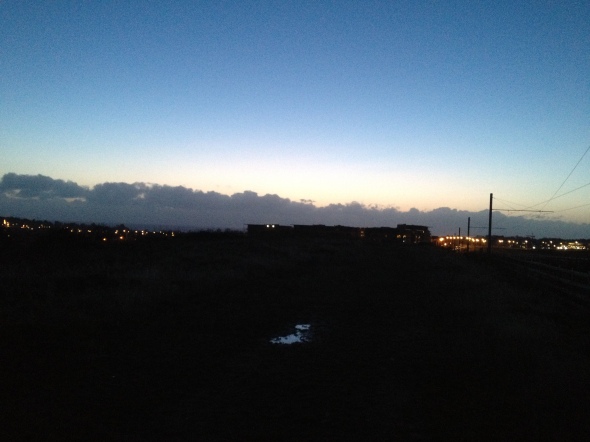 Just a couple of week later, the 6th of February, at 0722. Quite a difference in two weeks – another clear day, but this time the sky is blue, the shapes of things are more visible, and I can see the puddle ahead of me.
Just a couple of week later, the 6th of February, at 0722. Quite a difference in two weeks – another clear day, but this time the sky is blue, the shapes of things are more visible, and I can see the puddle ahead of me.
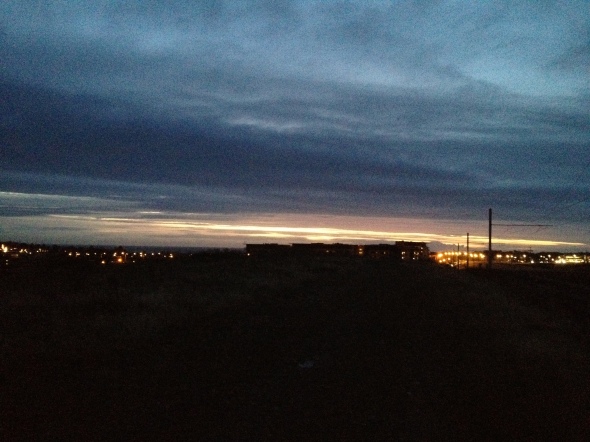 The next day, February 7th at 0724, shows the difference the cloud makes – dawn is at the same point, but no chance of seeing anything on the ground.
The next day, February 7th at 0724, shows the difference the cloud makes – dawn is at the same point, but no chance of seeing anything on the ground.
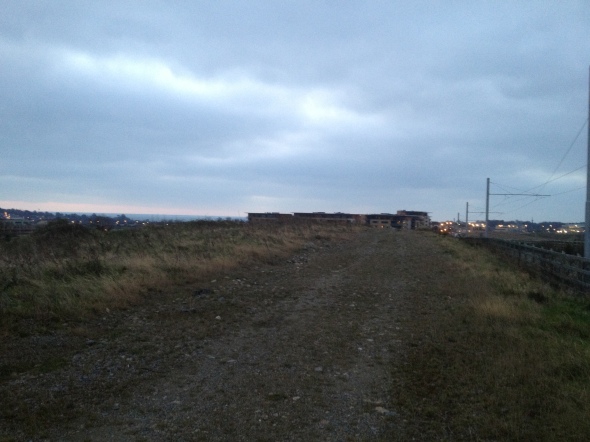 Now this is amazing – it is only two week later, the 21st of February, at 0723, and yet the difference in light, even with a totally overcast day, is amazing. Now everything is visible. To the right is the tram line, heading towards Cherrywood in the far distance. The buildings in the centre of the picture are the apartments of Tullyvale. To the left of them a sliver of the Irish Sea is visible, and then Killiney Hill rises on the left edge of the photo.
Now this is amazing – it is only two week later, the 21st of February, at 0723, and yet the difference in light, even with a totally overcast day, is amazing. Now everything is visible. To the right is the tram line, heading towards Cherrywood in the far distance. The buildings in the centre of the picture are the apartments of Tullyvale. To the left of them a sliver of the Irish Sea is visible, and then Killiney Hill rises on the left edge of the photo.
 Four days later, the 25th of February, again at 0723, and a different type of cloud cover darkens the scene, but leaves room for a lovely yellow and pink line above lower lying clouds concealing the rising sun.
Four days later, the 25th of February, again at 0723, and a different type of cloud cover darkens the scene, but leaves room for a lovely yellow and pink line above lower lying clouds concealing the rising sun.
 The following day, Feb 26th, at 0723, the clouds are different again.
The following day, Feb 26th, at 0723, the clouds are different again.
A couple of weeks later again, 7th March at 0723, and it is now pretty much daylight. It’s been raining for days, and the distant hills are lost in soft Irish mist.
The 29th of March at 0728, the sun is fully risen, and hidden behind the clouds, sending lovely shafts of light down onto the sea. The foreground looks darker to the camera due to shooting into the sun, but was bright enough to the human eye.
April 17th at 0724 – no fear of sunlight affecting the camera here, as the weather has turned “Irish” again!
 May 1st at 0725, the dun is shining brightly now.
May 1st at 0725, the dun is shining brightly now.
 The following day, May 2nd at 0725, shows a more dreamy, cloudy skyscape.
The following day, May 2nd at 0725, shows a more dreamy, cloudy skyscape.
And then . .
And then I moved away from that location
but . . .I knew I must come back for midsummer photos.
 The day before mid summer – June 20th at 0722
The day before mid summer – June 20th at 0722
and finally
Midsummers day itself, though hot and sunny later, was wet and misty early on – June 21st 2013 at 0726.
And now I’m working on the other side of the city, and I don’t get to walk through the fields each morning any more. But thanks to a whim and a sudden inspiration back in the dark days of winter, I have a whole selection of photos of my beloved few moments of morning commune with nature, to go with a whole set of cherished memories.
I hope you’ve enjoyed the trip as much as I have!
Steve
Memories From A Damp Past: The Housewives Of South Dublin [16June2013]
Posted: June 16, 2013 Filed under: 1980s, Life, Publishing, Weather, Women | Tags: Dublin 1980s, Jobs, life, Memory, Prayer, Sales 4 Comments
“Oh your poor thing” the woman who answered the door said to me “come inside and let me look after you”. I was about to find out if all those stories about bored housewives and door to door salesmen were true . . .
What stirs memory can be very subtle – sometimes a combination of atmospheric condition is needed along with place to really stir the dead leaves of the past.
I had totally forgotten about my wildly unsuccessful three-day career as a door-to-door salesman, fresh out of school, more than 30 years ago.
Until I drove through Ballybrack in the rain a couple of days ago. I have driven along Churchview Road a fair few times in recent years, with barely a flicker of memory, but this particular morning the sky was grey and heavy, a soft rain was drizzling down, the trees were dripping . . . and instantly I was transported back 30 years, to the day I trudged this road with a sack of books, and knocked on every door of every road leading off it . .
Even at the time, the smart part of my brain knew that any job that I could just walk straight into without experience and with barely a five minute interview, was probably not worth having. But I was determined to stand on my own feet and be independent, and I resolved to give it my all.
The publishing company was based in Parnell Square, in the heart of Dublin city centre, and the product was children’s books, and – yes, you guessed it – encyclopedias.
I was to be that living cliche, the door to door encyclopedia seller!
Judging by the number of people (15) that went through the three-day (unpaid) training course with me, the operation had a huge turnover of sales staff. We trained Monday to Wednesday, and then, on Thursday, were were unleashed on the public for the first time. The whole group of us were taken by bus to Sallynoggin in southeast Dublin, and there met by a supervisor in a van who gave us our stock, and split us up among the myriad of new and old housing estates over the surrounding few square miles.
It was a typically wet Dublin day – not a downpour, not blustery, just a steady seeping, weeping soft wetness from a heavy grey sky.
I was given Ballybrack – the vast complex of then fairly new housing along all the roads that lead off Churchview Road – Watson Drive, Watson Avenue, Watson Park, Blackenbush, Pinewood, and what felt like a million other places. I started with zest, and swear I must have have knocked on 500 doors that day . .
Disheartening of course, both for me, and the poor people whose day I disturbed. Perhaps one sale in every 100 houses. But I was glad to have a job and to be (perhaps) earning money, and I kept at it. I would, of course, be paid commission only, so what I earned would depend wholly on my success rate.
As a well brought up (and well read) boy, my sales spiel, if not successful, was at least polite. I was smiling, courteous, and no matter how brusque my dismissal at the door was, I always thanked the householder for listening to me, and apologised for taking up their time uninvited. That last touch actually netted me one of my very few sales – a doctor, who had initially sent me away, called me back as I was walking down the driveway and bought an encyclopedia, explaining that he had never encountered a salesman so well mannered before!
That was one of only two sales the first day, and the next day I was back in the same location, to knock on the doors of a further 400 or so houses.
Late in the morning, I hit the jackpot. Knocking on yet another door, which was opened by a rather harassed looking young woman, I listened in disbelief as she told me that herself and a friend, to whom she quickly introduced me, were in the process of setting up a creche, and had just been discussing the fact that they needed childrens books! I can’t remember how much I sold them, but it probably accounted for more than half of all my sales for the whole week. When I say “creche” this was of course, the pre-modern-regulation early 80s version – i.e. 7 or 8 toddlers being looked after by the pair in a normal 3-bedroom terraced house, hence their rather fatigued demenour.
Later in the afternoon, footsore and weary, and still with far too many unsold books in my heavy bag, I knocked on yet another door, and encountered that fable of lurid fiction, the housewife who didn’t want to buy anything, but who liked the look of me, and invited me in.
Luckily for me, as I was far too innocent in those days to know how to handle such a situation, this was Ireland in the 1980s, and not America or (as I would discover a few years later) the much more liberated England. The Irish Mammy who said I was a lovely looking young thing and invited me into her house did so in order that . . she could give me a cup of tea, and suggest that we say a few prayers together to the Virgin Mary that I might get a better and more rewarding job !
And even if I was disappointed that nothing else was on offer (like the purchase of a book – what else would I be thinking?) the tea was very welcome, and I was touched by her concern for my welfare, and her determination to offer up prayers for my future.
The following day, although a Saturday, was to be a work day, as the publishing house insisted on a sic day week. This time I was taken to Finglas, for an utterly soul destroying day in which I knocked on seemingly a million doors, was chased away from many of them, and did not sell a single book in 9 hours of pounding the streets. Somehow, my southside accent and polite sales spiel did not seem to be quite so appreciated here.
At the end of the week, I had managed to earn myself the princley sum of £13, but out of this I had paid for my bus fares and meals, which reduced my earnings to around £5, or, I calculated, around 3p for each door I knocked on. I knew then that it was not for me, but was pleased with myself that I had lasted longer than most of the class – of the 15 trainees, only 12 had gone out selling on the first day, only 5 remained on day 2, and there were just 2 of us to cover Finglas on the Saturday. And, presumably, a new class of 15 fresh-faced school-leavers to start training on the Monday morning . .
Now, many decades later, and with a solid career in IT management over the years, not to mention a quarter century of radio work, and an emotionally rewarding writing sideline, that first week of commerce after leaving school is long forgotten in my past. But memory is a funny thing, and the weeping sky and rain sodden trees along Churchview Road brought it back to me, clear as a bell, as I happened to drive through the area last Thursday morning.
So long ago that it seems to me it might have happened to another person. Many of the people whose doors I knocked on will be gone now. I wonder how the two ladies setting up the creche fared – was their career as short-lived as mine, or do they now run one of those big modern purpose built childcare centres around the city?
And I have to smile when I think of the woman who gave me tea and prayed for me to have a better career. So nice of her to care for a stranger.
Somehow, I’d love her to know that her prayers were answered.
Steve
Early Summer 2013 Schedule [09June2013]
Posted: June 9, 2013 Filed under: Uncategorized | Tags: radio, Writing Leave a commentI’ve been pretty quiet on here recently due to pressure of outside work commitments, but I’m still keeping up my regular schedule of radio presenting on both 8Radio.com in Dublin, and Radio Caroline internationally.
Mondays 6-9pm Radio Caroline, via www.radiocaroline.co.uk
Saturdays 11pm-2am on 8Radio.com, online and via FM 94.3 (Dublin), 106.7 (Cork) and 105.5 (Limerick)
I’m also still a regular reader at the Last Wednesday writers open-mic in Dublin, 7pm at The Twisted Pepper in Abbey Street on the last Wednesday of every month, where you can hear me read new short stories as well as extracts from my forthcoming book Running Away From The Circus – Eeverything I Know About Radio I Learned By Screwing It Up.
I’m insanely busy due to other commitments at the moment, but hope to get back to a more regular update schedule here soon!
Steve
Late Night Studio
Posted: April 7, 2013 Filed under: 8Radio.com, radio, Radio presenting, Uncategorized | Tags: Music, night, radio Leave a commentI’m currently on-air at 8Radio.com till 2am.
That lovely heady vibe of a late night radio studio, lights down low, music up loud.
There really is nothing like it!
This Time Conway, You’ve Gone Too Far! [2April2013]
Posted: April 2, 2013 Filed under: Life, Technology, Television | Tags: life, Technology, Television, TV Leave a commentWhenever I tell people what I have done, some politely look away, others react with shock . . .
It’s just over 18 months since I made the decision described in the post: Farewell Unreal World. The decision which just seemed to evolve naturally as my tastes gradually changed, but which has shocked some people far more than anything else I have done in my long and colourful ife. The decision that I no longer needed a television.
If you read the piece I wrote at the time, you will see that this was not so much a sudden decision to do something radical, as the logical de-cluttering of my lifespace by getting rid of a device which I no longer regularly used. I thought it might be interesting to write about it, and I certainly never expected it to provoke the sort of reaction it did (and still does) from people I meet. But more of that later.
First: a quick catch up. Yes, I am still living without a television, and I so seldom remember or notice this changed state that I have forgotten to write this followup piece on multiple occasions. I was going to write a follow-up when a month had passed, but I didn’t remember, so then I told myself 6 months. But the next time my TV-less status came into my mind it was 9 months, so I resolved to wait for the year anniversary, and forgot again. The only reason I’ve managed to hit the 18 month date is because I put a reminder in my phone the last time the thought crossed my mind, back in February!
So, my life without the actual object in the room seems to be pain-free (I’m not saying “my life without TV” since I had gradually diminished and ceased watching before getting rid of the actual device). I noted in that article 18 months ago having a stack of unwatched DVDs ready in the corner in case I needed entertaining . . . well, quite a few of those are still unwatched, some have been gathering dust for a long time. I will watch the occasional old film, or the odd TV episode on DVD, but aqt a rate where it would take me about 3 years to get through one season boxset. When I got rid of the TV I reminded myself that I could, if I so desired, catch the odd really good TV programme online. 18 months later, my online viewing in that time consists of two episodes of a series on canals from RTE, and assorted video clips from news stories on the RTE and BBC News websites.
As I said, disposing of the TV set and doing without live TV just seemed pretty natural to me at the time, given that I had stopped using it. I imagined that others might find this a little off – people are pretty wedded to their TV after all – but even I was shocked by some of the reactions from people in my life who heard of my decision or read the piece.
There was a visceral, almost fearful reaction, from those around me.
People who had happily chatted to me about “crazy” stuff I had done in the past (such as doing a naked photo shoot for an album cover and Hotpress magazine article, or running away to sea to do offshore radio) declared that this was just too odd.
“You’ve gone too far this time, It’s not funny, just plain weird” one co-worker told me.
Some pitied me. “If you have an addiction to TV, you should just try cutting down a little – there is no need to over-react by getting rid of it altogether” another colleague tired to counsel me, totally missing the point that I had dispensed with the set because I was hardly ever watching it, not because I felt I was abusing it.
Many people seemed offended by my decision to get rid of the TV, seeing it somehow as an attack on themselves for still continuing to enjoy television. Some felt that I would have problems visiting other people’s houses who had TV, because either my hosts would have to turn off their set, or I would be “offended”
Nothing could be further from the truth. I have no problem visiting houses where there are TVs, just as I have no problem visiting people who have Black & Decker Workmates, Wii games consoles, or motorbikes, which also happen to be things which I, personally, do not use. Likewise, my personal preference in women tends to run towards dark hair, and I haven’t dated a blonde in 20 years, but no one would expect me to be offended by, or avoid visiting,someone just because they have a blonde partner.
To me, the way people feel so very personally challenged by my choice to do without a particular domestic accessory tells me more about their anxieties about the relationship with television than my own.
An interesting thing though. All those people, including the ones most vocally hostile when I wrote the piece, all seem to have blanked it out of their minds. They never bring it up, and in conversation will frequently ask if I saw such and such on television last night etc. It’s like I’ve made a choice which is too different for the mind to fully accept and record in memory.
Now, I’d love to tell you that my life is different and more full of time and interesting things since I got rid of the TV set, but that wouldn’t be strictly true, as my life had already become these things gradually, as my viewing declined, long before I got rid of the physical object.
But I can tell you that the space it occupied has been suitably filled with clutter.
Steve




